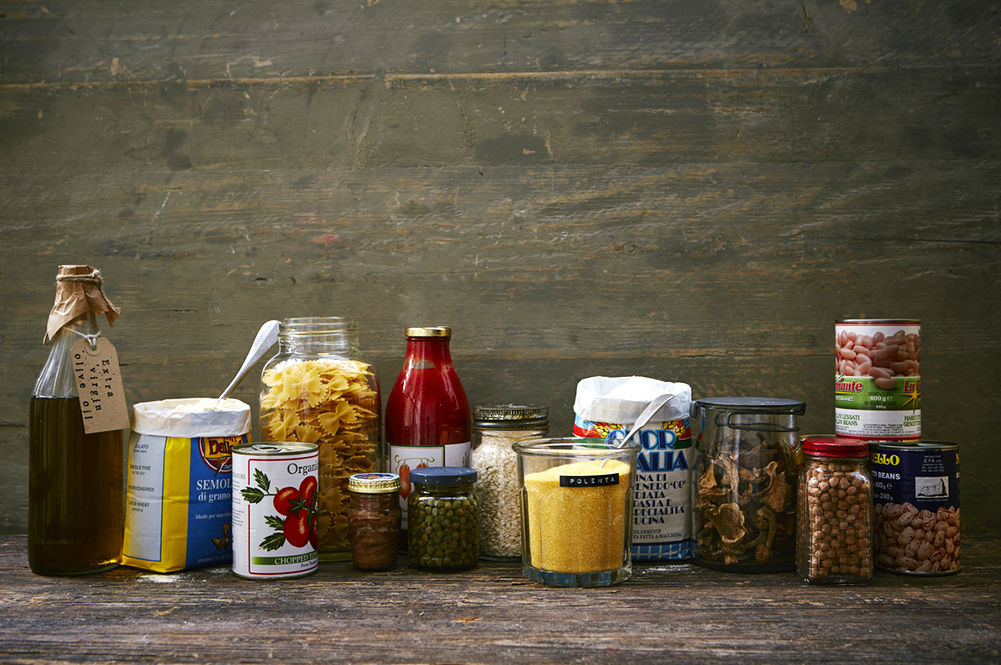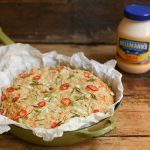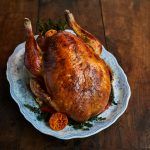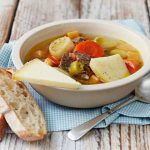The Italian store cupboard is a treasure trove of foodie goodies. If you make sure to throw in a few fresh bits here and there, these ingredients will set you up for plenty amazing meals.
Olive oil
Here’s the rule: extra virgin for salads and dressings, and straight-up olive oil for cooking. But what’s the actual difference?
Extra virgin olive oil comes from the first press of olives. This makes for a grassier flavour and colour. It tastes stronger than olive oil made from later pressings, so less should be used than the regular stuff.
You can pay a little or a lot for extra virgin olive oil. Treat it like wine – if you’re looking to pay a bit more money for extra virgin olive oil, buy it from deli or supplier where you can try before you buy.
Athough it shouldn’t be cooked with, extra virgin olive oil is used in a lot of recipes to finish soups, stews, pastas and salads. My all-time favourite use is a tiny drizzle of great extra virgin on a Caprese salad – slices of soft buffalo mozzarella and beautifully ripe tomatoes with a few sprigs of fresh basil, a pinch of freshly ground black pepper, and just a touch of of grassy, peppery extra virgin olive oil.
Passata
Sieved tomatoes are great for getting rich flavour into soups and sauces. The tomatoes used are often fresh, and are sieved to remove seeds and skin, although you can buy smooth or chunkier passata.
If you can’t get hold of any at all just use a couple of tins of good-quality plum tomatoes and blitz them. Don’t use passata as a substitute for tomato puree though, as this is a cooked concentrate of tomato.
I always have a jar of the good stuff around to make quick tomato sauce for meat or pasta, or to add to soups.
Good-quality tinned plum tomatoes
Chopped tinned tomatoes are often quite watery, whereas whole tomatoes hold in flavour and release less water, so always buy whole tinned tomatoes. The better quality the tinned tomato, the better the sauce.
Break up the tomatoes before adding to a sauce, either with a pair of scissors in the can, or tip into your hand and squeeze into the pan.
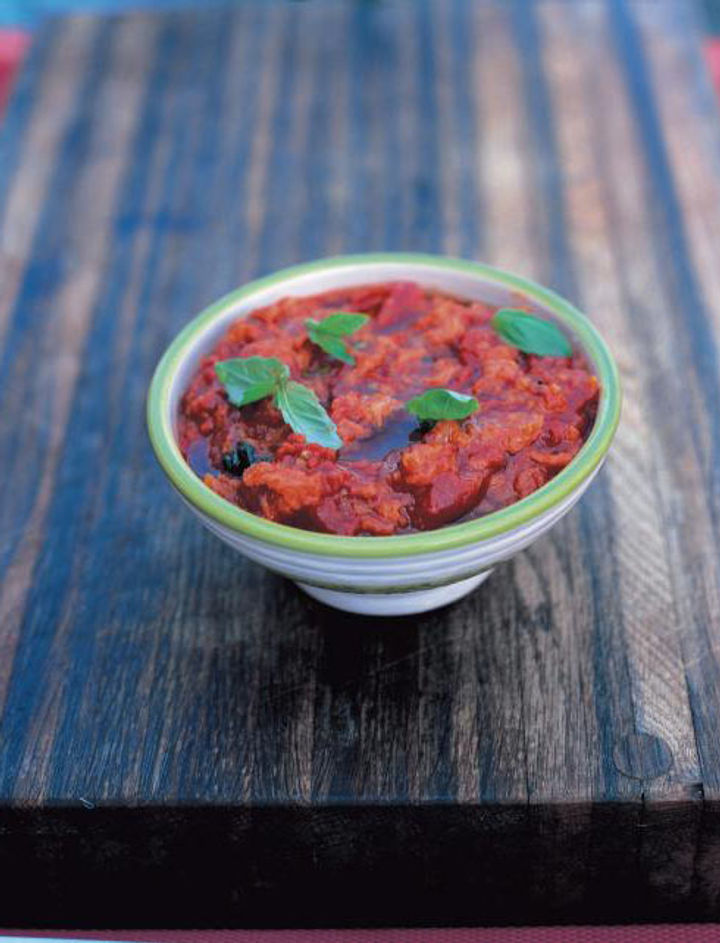
Pappa al pomodoro is the ultimate comfort soup, based on tinned tomatoes and using up stale bread – a great storecupboard saviour.
Good jarred anchovies and capers
These little beauties are preserved with salt, so they add a massive punch of seasoning to any dish – a little really does go a long way. A couple of anchovies melt away in a hot pan to a beautiful almost Marmite-like flavour. They’re best with broccoli, lamb, chicken and fish, and also enhance stuffings and sauces, acting as a wonderful edgy seasoning.
Capers also season very well. Crisp them up or stir them into sauces to add their uniquely rounded flavour. They’re perfect with fish, tomatoes, and sprinkled on pizza.
00 flour
In Italy, flours are graded in 0s for texture. 0 is coarser flour and 000 is much finer. 00 flour is a great all-rounder (much like plain flour) but is best suited to making pasta and bread.
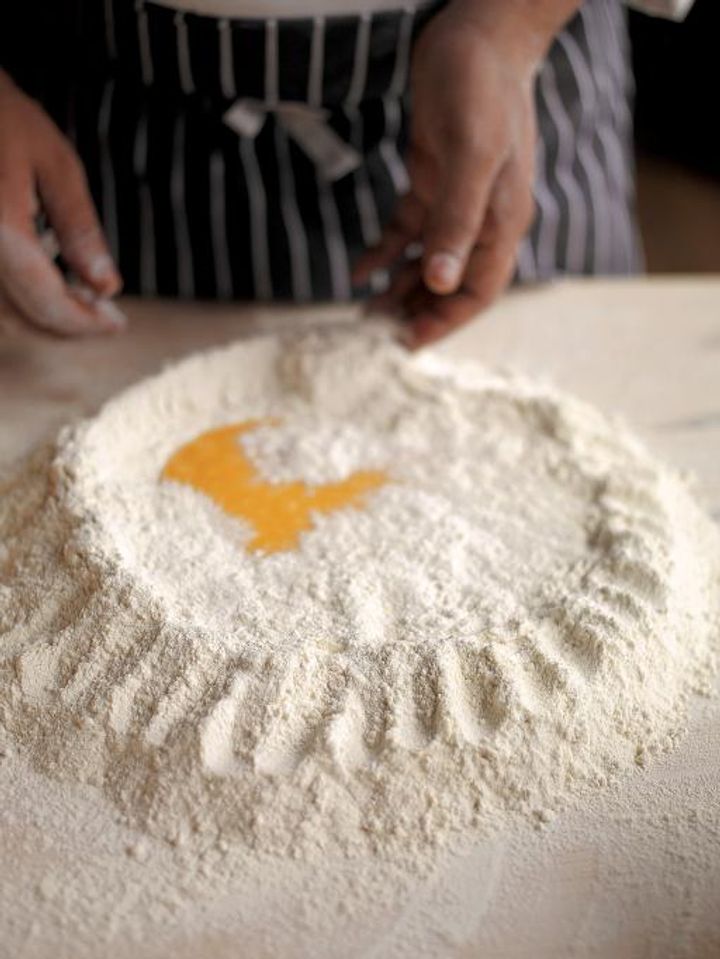
You can get types of 00 that are specifically for making pasta. You can make your own with this simple pasta dough recipe – it’s a lot easier that you think!
Durum semolina
Fine semolina is a flour-like substance that can be mixed into bread and pasta doughs, or sprinkled over to prevent sticking. It has a more granular texture than flour because it is chipped instead milled like regular flour. You can buy different types of semolina like corn and rice – it just refers to how it is milled.
Dried pasta
Of course, you can totally forgo making fresh pasta and buy good-quality dried stuff. It’s got just as much of a place in Italian home cooking, and you can buy lots of kinds that you might not be able to make at home without the help of an extruder.
You can also buy wholewheat and corn pastas, along with beautiful coloured pastas that use chilli, tomato, spinach, or squid ink.
Dried wild mushrooms
Traditionally, after harvesting mushrooms like the king of ‘shrooms, porcini, they would be sliced and dried so they would keep through the winter months. Luckily, drying as a method of preservation also intensifies taste, which means only a small amount of hot water is needed to bring a small amount of dried mushroom bouncing back to life and full flavour. Add to Bolognese, stews, risottos and stuffings.
Risotto rice
To make risotto, one of the creamiest, most comforting rice dishes in the world, you need quality rice. In the UK we seem to prefer Arborio (which could be down to what is generally on offer). However, Carnaroli rice seems to be preferred in Italy, with Italian-grown rice being the first choice.
Risottos are a beautiful range of dishes that need a little TLC to be brilliant – from the basic “bianco” to using ingredients like crab and wild mushroom, they’re all special, delicate, and make the perfect supper. Once you’ve cracked the perfect risotto you’ll never want to go back.
Tinned and dried pulses
Cannelini, borlotti, chickpeas, butter beans, lentils – these are all brilliant staples and fillers for when times are lean. They’re packed with B vitamins and fibre, and incredibly good for you. They can turn any soup or stew into a chunky, wholesome bowlful of goodness – or creamy deliciousness, if blended.
Polenta
Polenta is ground corn meal and was the staple of many Italian diets in Northern Italy. Hearty and warming, it can be made into a thick porridge to serve with roast meat. It can also be made and set, to cut up and fry or bake. It’s got plenty of uses – in fact, Jamie uses it to make his amazing gluten-free Orange & pistachio cake!
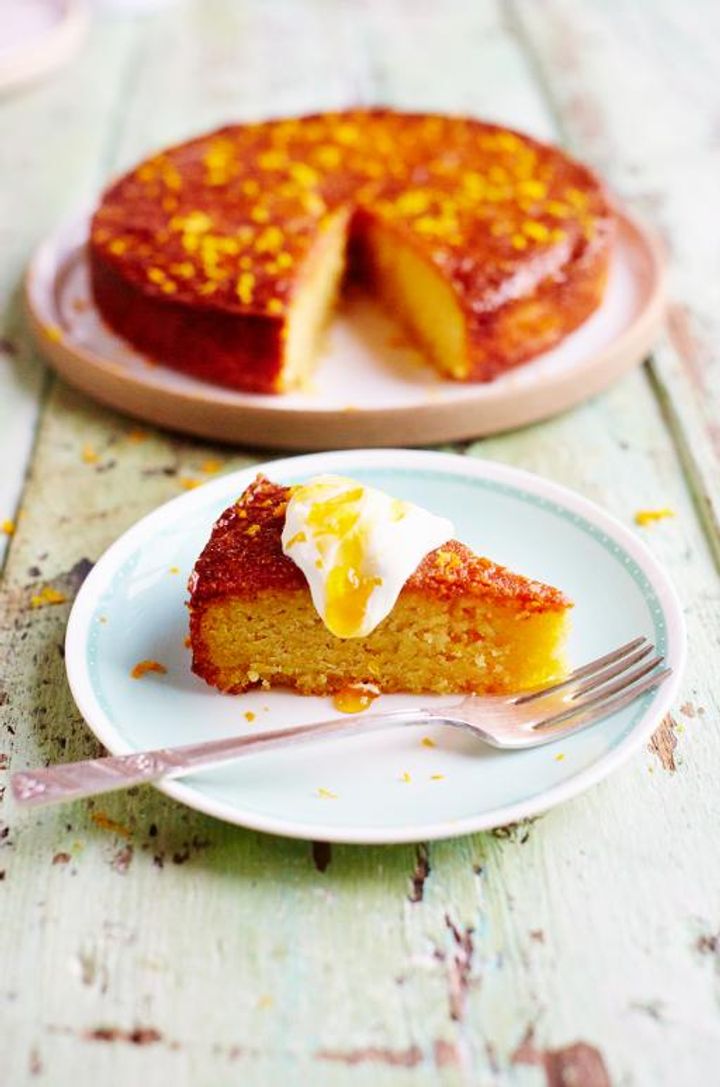
Coffee
Where would the Italians be without their coffee? So many variations come from this humble bean farmed in South America, South East Asia, India and Africa. From the cappuccino to start the day to the shot of espresso to give the afternoon a kick, coffee is the lifeblood of Italy.
It’s also a big part of the cuisine. A humble espresso shot can pep up desserts like the classic tiramisu, make a beautiful granita, and a wonderfully quick and luxurious affagato – pouring a shot of espresso over a scoop of vanilla ice cream. Yum!
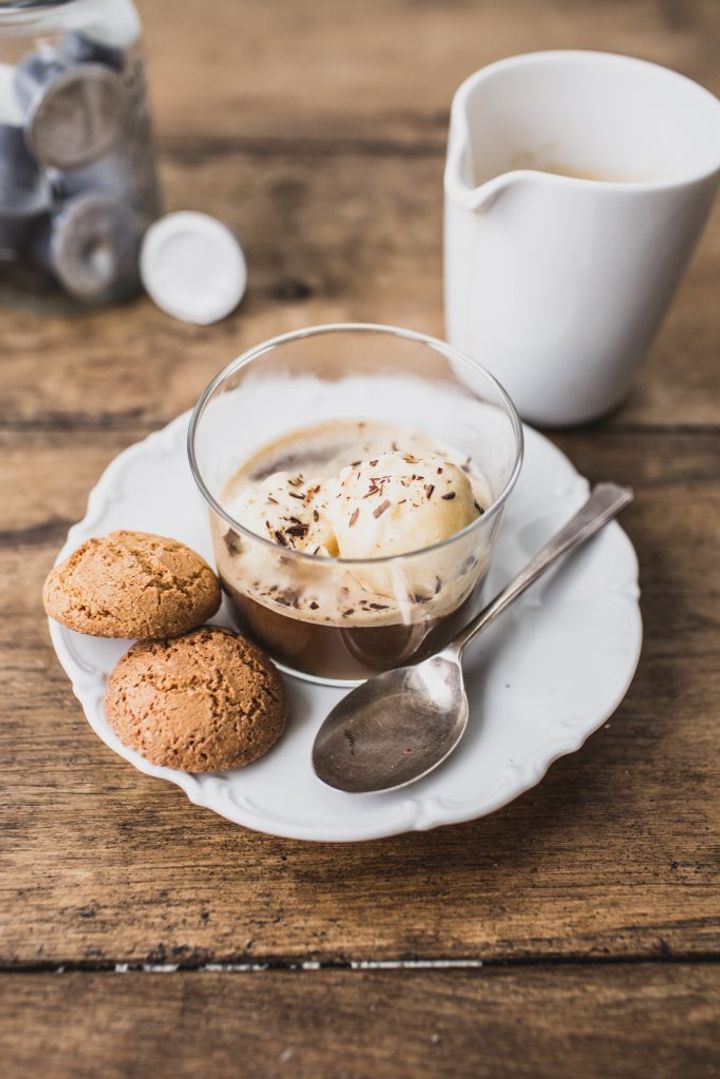
Wine
“Cook with the wine you drink.”
Jamie and Gennaro have always said this, and they’re right – you put wine in food to taste it, not just because it’s alcoholic.
The best example of this would be with a gutsy Pollo alla cacciatora (Hunter’s chicken stew). The chicken is marinated overnight in a good Italian red like Chianti to for storming flavour and colour.

White wine is also an important component in a good risotto. The fragrance is incredible, and the flavour brings everything to life.
Pour yourself a glass for good measure.
